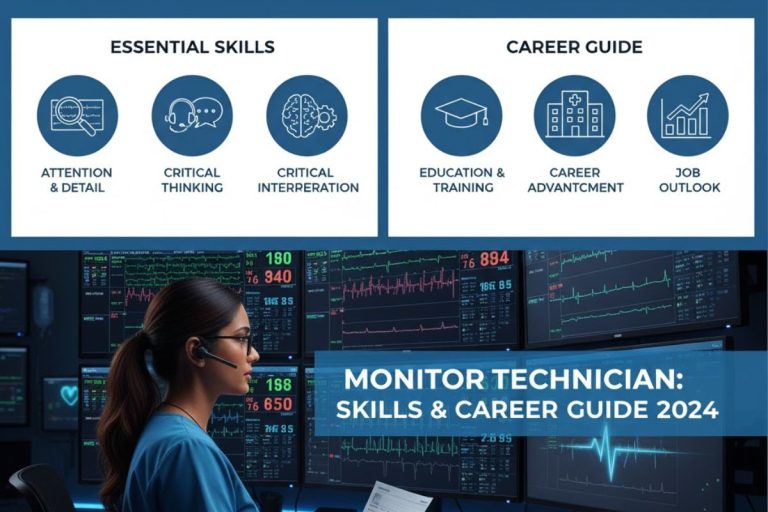Technology doesn’t have to be complicated or expensive. The most successful businesses today use simple technology solutions that solve real problems without creating new ones. This guide will show you how to choose, implement, and benefit from simple technology solutions that actually work.
What Are Simple Technology Solutions?
Simple technology solutions are easy-to-use, cost effective tools that help businesses operate more efficiently. These solutions focus on solving specific problems without requiring extensive training or complex setup processes.
Key Characteristics:
- User-friendly interfaces that anyone can learn quickly
- Affordable pricing that fits your budget
- Quick implementation without months of setup
- Reliable performance you can count on daily
- Scalable features that grow with your business
Why Your Business Needs Simple Technology Solutions
Over 40% of businesses are planning to increase capital spending, and half are raising their tech investment this year. This surge in technology adoption isn’t just a trend it’s a necessity for staying competitive.
Real Benefits You’ll Experience:
- Cost Reduction: Simple solutions typically cost 60-70% less than complex enterprise systems
- Time Savings: Easy to use tools reduce training time from weeks to hours
- Better Decision Making: Clear data and reports help you make informed choices
- Improved Customer Service: Faster response times and better communication
- Competitive Advantage: Modern tools help you compete with larger companies
Core Digital Solutions for Business Success
Cloud Solutions & DevSecOps
Cloud technology is the foundation of modern simple technology solutions. Companies using cloud solutions cut wasted tech spend, simplify operations, and scale securely.
Popular Cloud Solutions:
- Google Workspace: Email, documents, and collaboration tools
- Microsoft 365: Complete office suite with cloud storage
- Amazon Web Services (AWS): Scalable hosting and computing power
- Dropbox Business: Simple file sharing and backup
Implementation Steps:
- Assess current needs and list what you use daily
- Choose your platform and start with one main provider
- Migrate gradually, moving one service at a time
- Train your team, focusing on daily use features first
- Monitor and optimize by tracking usage and costs monthly
Data Engineering & AI Solutions
Artificial Intelligence sounds complicated, but simple AI solutions are now available for every business size.
Easy AI Tools for Business:
- Chatbots: Answer customer questions 24/7
- Email Automation: Send personalized messages automatically
- Inventory Prediction: Know what to stock before you run out
- Document Processing: Turn scanned papers into searchable text
Case Study Success: A local electronics store implemented a simple chatbot and achieved a 40% reduction in phone calls, 24/7 customer support coverage, 25% increase in online sales, and customer satisfaction improvement from 3.2 to 4.6/5.
PEOPLE ALSO READ : Advert Technologies Your Complete Guide to Revolutionizing Modern Marketing
Application Modernization
Old software slows down your business. Modern applications work faster, cost less, and integrate with other tools.
Signs You Need Application Updates:
- Software crashes frequently
- Takes forever to load
- Doesn’t work on mobile devices
- Can’t connect to other tools
- No longer supported by the vendor

Essential Business Technology Services
Customer Service Solutions
Must-Have Customer Service Tools:
- Help Desk: Freshdesk, Zendesk ($15-49/user) – Organize customer requests
- Live Chat: Intercom, Drift ($50-100/month) – Instant customer support
- Phone System: RingCentral, Zoom ($20-35/user) – Professional communication
- CRM Software: HubSpot, Pipedrive ($0-90/month) – Track customer relationships
Customer Service Automation Benefits:
- Response time improves from hours to minutes
- Consistent quality service every time
- Handle more customers with same staff
- Faster resolutions increase customer satisfaction
Software & Web Development
You don’t need to hire expensive developers for basic business applications.
No-Code/Low-Code Solutions:
- Website Building: Wix, Squarespace, WordPress
- Database Creation: Airtable, Notion, Microsoft Access
- Workflow Automation: Zapier, Microsoft Power Automate
- Mobile Apps: Glide, Adalo, AppSheet
Development Timeline Comparison:
- Simple Website: Traditional (2-3 months, $5,000+) vs Simple Solution (1-2 weeks, $200-500)
- Basic Database: Traditional (1-2 months, $3,000+) vs Simple Solution (2-3 days, $50-200)
- Mobile App: Traditional (4-6 months, $15,000+) vs Simple Solution (2-4 weeks, $500-2,000)
IT Support & Administration
Cybersecurity solutions that actively monitor, detect, and neutralize threats before they harm your business are essential in 2025.
Essential IT Services:
- Managed security protection from cyber threats
- Backup services to keep your data safe
- Software updates to stay current and secure
- Technical support when you need help
- Network management to keep everything connected
Security Checklist:
- Password manager for all staff
- Two-factor authentication enabled
- Regular software updates scheduled
- Daily automated backups
- Security training for employees
- Antivirus software on all devices
Implementation Strategies
Why Choose Simple Technology Solutions
The Simple Tech Advantage:
- Lower Total Cost: Simple solutions typically cost 50-70% less over three years
- Faster Implementation: Get up and running in days, not months
- Easier Training: Your team can learn quickly without extensive courses
- Better Support: Smaller vendors often provide more personal service
- Flexibility: Easy to switch or upgrade when needs change
Cost Comparison Example: Enterprise solutions can cost $84,000 in the first year (including $50,000 initial setup, $24,000 in monthly fees, and $10,000 training costs), while simple solutions cost only $12,000 for the same period – a savings of $72,000.
PEOPLE ALSO READ : Business and Technology Solutions Complete Guide for Success in 2025
Digital Transformation Process
Phase 1: Planning (Week 1-2)
- Assess current technology and identify key pain points
- Set realistic goals and create implementation timeline
Phase 2: Selection (Week 3-4)
- Research solution options and compare features and pricing
- Test free trials and make final decisions
Phase 3: Implementation (Week 5-8)
- Set up new systems and import existing data
- Configure user accounts and test everything thoroughly
Phase 4: Training (Week 9-10)
- Create user guides and conduct training sessions
- Set up support channels and monitor adoption rates
Phase 5: Optimization (Ongoing)
- Gather user feedback and monitor performance metrics
- Make necessary adjustments and plan future upgrades
Industry Applications
Small to Medium Business Solutions
Recommended Technology Stack for SMBs:
- Email & Calendar: Google Workspace ($6-12/user/month) – Familiar interface, reliable
- File Storage: Dropbox Business ($15-25/user/month) – Easy sharing, automatic sync
- Accounting: QuickBooks Online ($25-180/month) – Designed for non-accountants
- Customer Management: HubSpot CRM ($0-800/month) – Free to start, grows with you
- Project Management: Trello or Asana ($0-24/user/month) – Visual, intuitive design
- Communication: Slack or Teams ($0-12/user/month) – Simple messaging, file sharing
Small Business Success Story: Johnson & Associates Law Firm (12 employees) implemented simple technology solutions and achieved 30% reduction in administrative time, 50% faster client communication, 25% increase in billable hours, 90% improvement in document organization, and ROI of 300% within 6 months.
Enterprise-Level Implementations
Even large companies benefit from simple technology solutions when properly scaled.
Enterprise Simple Tech Strategy:
- Start with departmental pilots in one department
- Expand successful solutions company-wide through gradual rollout
- Focus on integration to ensure new tools work with existing systems
- Support employees through transitions with change management
- Regular reviews and updates for continuous improvement
Measuring Success & ROI
Key Performance Indicators
Technology Success Metrics:
- Efficiency: Time saved per task (target: 25-50% reduction)
- Cost: Total technology spending (target: 20-40% reduction)
- User Adoption: Active users vs. total users (target: 80%+ adoption rate)
- Customer Satisfaction: Support response time (target: 50% faster response)
- Revenue Impact: Sales increase (target: 15-30% growth)
ROI Calculation Formula: ROI = (Financial Gains – Technology Investment) / Technology Investment × 100
Example: Annual savings from automation of $50,000 minus technology investment of $15,000 equals ROI of 233%.
Getting Started with Simple Technology Solutions
Budget Planning
Simple Technology Solutions Budget Template (Per 10 Employees):
- Core Software: $200-500/month ($2,400-6,000/year)
- Security Tools: $50-150/month ($600-1,800/year)
- Communication: $100-300/month ($1,200-3,600/year)
- Automation: $50-200/month ($600-2,400/year)
- Training: $100-300/month ($1,200-3,600/year)
- Total: $500-1,450/month ($6,000-17,400/year)
90-Day Implementation Plan
Days 1-30: Foundation Complete needs assessment, research and select primary tools, set up basic accounts, begin data migration planning, create user accounts.
Days 31-60: Deployment Import data and configure systems, set up integrations, conduct initial user training, test all systems, create documentation.
Days 61-90: Optimization Monitor system performance, gather user feedback, make adjustments, complete advanced training, plan next phase improvements.
PEOPLE ALSO READ : Blue Hill Technology Your Trusted Oracle Database Solutions & Digital Services Partner
Conclusion
Simple technology solutions offer the perfect balance of power and ease-of-use for businesses of all sizes. By focusing on tools that solve real problems without creating complexity, you can achieve significant improvements in efficiency, cost savings, and customer satisfaction.
The key to success lies in careful planning, gradual implementation, and continuous optimization. Start with the basics, measure your results, and expand your technology capabilities as your business grows.
Remember: the best technology solution is the one your team actually uses. Choose simple, reliable tools that make work easier, not harder. With the right approach, simple technology solutions can transform your business and give you a competitive edge in 2025 and beyond.
Ready to get started? Begin with a thorough assessment of your current needs, choose one area for improvement, and implement a simple solution that addresses your biggest pain point. Success with simple technology solutions is not about having the most advanced tools it’s about having the right tools that work reliably every day.
READ MORE : Super Converters







